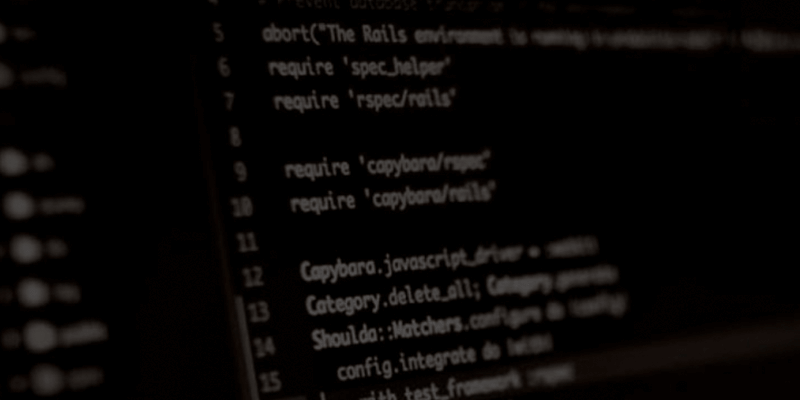Given the explosion of generative AI over the past few months, discussion of HR automation suddenly feels a little… tame. But you’d be shocked at how many organizations still don’t automate HR processes fully.
Sometimes, even fundamental HR tasks are still happening manually. Slowly. Expensively. Inconsistently. Insecurely.
That simply doesn’t need to happen anymore. The HR tech market is evolving constantly. There’s no shortage of tech to help teams become more modern, effective, and efficient.
💡Yes, even if you don’t have the budget for some whizz-bang new HRIS. Or you’re in the middle of an existing contract. Or there’s no time, energy, or inclination to re-evaluate your tech stack. The latest generation of AI-powered HR Service Delivery (HRSD) tech, like Applaud, integrates across your existing systems, helping you unlock more value from your current stack without costly overhauls.
In this guide, we’ll explore both the WHY and the HOW of automating HR processes. So you can assess whether your organization needs to take a leap forward, fast.
Chapters
- Why automate HR processes and the possible benefits
- The downsides of HR process automation
- What types of processes can be automated
- Automation across HR services
- What tech you need to get started
Why automate HR processes
Automated HR workflows make a lot of sense, not just for HR departments but for the C-suite and employees too. We’ll dig into the different types of automation in a moment. First let’s look at the benefits of HR automation.
Benefits of automating HR processes
Increase HR efficiency and productivity
Perhaps the most obvious benefit of HR workflow automation is that it allows your HR team to get more done. Human Resources is awash with administrative tasks that can be easily automated.
Automating these manual tasks or processes using software means the task itself happens automatically – AKA, much faster. At the same time, HR no longer has to waste time on those activities, so they can focus elsewhere.
This reduces HR costs and decreases HR team burnout (42% of HR teams are struggling with their workload). It also allows HR to contribute more to higher-value tasks that can’t be automated.
HR automation offers the magic combo of effectiveness and efficiency, helping HR focus on what matters most.

Drive engagement with a better employee experience
We’ve said it before and we’ll say it plenty of times again: employees are your customers. That places a premium on the employee experience.
As Deloitte say: “Companies need to step up their employee experience efforts, so they start to more closely mirror the consumer experiences people have come to love and expect. Digital HR has become not just a “nice to have,” but a necessity for an organization’s future growth and acceleration.”
With automated HR workflows, employees enjoy:
- Faster recruitment and onboarding
- Better communication and access to HR
- Increased transparency into policies and processes
- Better career development
- Less time wasted on boring admin
- Less friction with HR services and tasks
This also matters for your employer brand. One reason the digital employee experience is becoming so important is because it’s what workers, particularly younger workers, expect.
A recent study found that 93% of millennial workers think up-to-date workplace tech is a critical factor in choosing an employer, for instance. And 42% would actively leave a company with sub-par tech.
Reduced compliance risk
HR professionals shoulder a major compliance burden, because of the sensitive employee data you handle and situations you encounter.
No software can completely alleviate the risk. A large part of HR’s role will always be the difficult human-to-human interactions that need sensitive handling. But embedding automated HR workflows can mitigate risk, by removing scope for error.
For instance, automating pulse surveys allows you to ask potentially sensitive questions in a consistent, compliant way. As opposed to, say, a busy, stressed manager putting their foot in their mouth in a more informal setting.
This is especially true given the number of systems your HR tech stack likely includes. Whenever you have to move data between disconnected systems, the risk of breaches or errors deepens. And with it, the risk of breached trust, fines, reputation damage, and legal action.
Better data visibility
HR automation brings clarity and visibility across your HR data. That’s true whether you automate HR processes using an employee experience platform that connects across your existing stack or invest into dedicated HR process management software.
When you automate processes, you generate a heap of data about those processes. With AI-powered HRSD platforms, this data becomes instantly accessible and actionable, helping HR teams make smarter, faster decisions that improve service delivery. This data would’ve been extremely difficult to collect and store if you’d been doing the process manually.
For example, say your onboarding process is still manual. How long did you spend last week editing and sending contracts? And how long did it take for candidates to accept once they’d received their contract? Is there any difference by role type or seniority?
There’s a lot of manual number crunching needed to get close to that data. But if you’d automated the onboarding process the data would be at your fingertips. And you’d be better able to deliver valuable business intelligence.
Fairer, more consistent processes
The problem with handling high-volume repetitive tasks manually isn’t just wasted time. It’s also about the increased scope for human error, bias, and inconsistency.
HR workflow automation means you invest time upfront to ensure a process is fair, efficient, and effective. Then it can be repeated forever, following those parameters.
Take onboarding again. If you automate onboarding, you know every new employee has the right info, tools, and training to start their job effectively and safely. Every time, without any extra effort. Nobody slips through the cracks.
Does HR workflow automation have any downsides?
Of course, there are two sides to every coin. Compared to machines, humans are inconsistent, emotional, and messy, yes. But they’re also compassionate, intelligent, contextual, and sensitive. Warm.
This warmth is crucial to HR and must remain part of HR’s role.
At the same time, there’s a lot of fear and anxiety around automation. A PwC survey finds that 60% of employees are worried that automation is putting jobs at risk. Nearly half (48%) believe traditional employment won’t be around at all in the future.
HR must mitigate these fears and ensure appropriate investments into reskilling and upskilling. To ensure automation is a positive for the organization and your workforce.
How to automate HR processes
Now we’ve looked at the benefits of automating HR processes, let’s look at how you might integrate automated HR workflows across different teams.
💡That’s one reason modern HRSD tech can often deliver more value than standalone process tools or complex new systems. Most people functions are refracted across multiple teams and pieces of tech. A platform that sits across them all and connects those dots can transform your whole people function. In one swoop.
Types of HR processes that can be automated
Automation in recruitment
There are heaps of touchpoints throughout the recruitment process that can be successfully automated. To:
- Accelerate time-to-hire
- Reduce candidate drop-offs
- Improve the candidate experience
- Improve consistency
- Reduce bias and improve diversity
- Reduce compliance risk
- Reduce recruitment admin
- Reduce recruitment costs
- Better recruiter experience!
Here’s what that might look like:
Pre-screening
Many recruitment teams use a pre-screening process to whittle down candidate volume. This is an obvious area for automation as it usually involves foundational yes/no screening questions.
CV screening
Most talent acquisition professionals today use automated workflows to parse and evaluate CVs against job requirements. This typically either rules out CVs altogether or, more often, prioritizes them. So recruiters can address the best applications first.
Candidate sourcing
Automated candidate sourcing uses technology to identify top talent at scale, from a range of sources. Typically those profiles are then added to your ATS or candidate database, growing your talent pool.
Job adverts
Automation can help create and distribute job adverts, reducing human input. You might use software to automatically scan adverts for bias, for example. Then post them to multiple job boards and your social media.
Interview admin
Scheduling interviews is notoriously admin-heavy. Talent acquisition teams typically spend hours arranging (and rearranging) calls and interviews and juggling calendars. If you automate HR processes for this, they become easy and fast.
Automation in employee onboarding
Good onboarding is the crucial transition between recruiting someone and them becoming a valuable employee. Good onboarding accelerates this process, to:
- Reduce dropouts
- Reduce early turnover
- Improve offer acceptance rate
- Accelerate time-to-productivity
- Decrease time-lost to training
- Improve quality-of-hire
- Improve recruitment ROI
- Reduce compliance risk

But often, businesses aren’t able to deliver good onboarding. That’s why 15% of employees have eventually declined a job offer due to problems with onboarding. Automating onboarding goes a long way to solving these issues, by creating automatic workflows and connecting teams.
For example, teams might automate HR processes like:
Contract management
Especially if you hire lots of people into lots of types of roles, juggling contracts can be a nightmare. Making sure everyone is issued with the correct contract with the right T&Cs, fast, is crucial. But often involves a load of manual work that automation can make easier.
Background checks and references
Conducting background checks and collecting references can be a real pain point. If you hire at volume or in heavily regulated industries, this can take ages and presents a compliance risk. Automating this process ensures it happens, fast and consistently. Without the enormous manual input.
Welcome emails
As well as the administrative parts of onboarding, many teams also want to consider the onboarding experience. (Experience is something we’re big on at Applaud). A huge part of that is making your new employees feel welcomed and valued as they join your team. Lots of that also happens in-person once someone starts but it’s common to automate some of this too.
 Your Guide To: Employee Experience Platforms (EXP)
Your Guide To: Employee Experience Platforms (EXP)
Read Josh Bersin's report to learn more about the EXP market and it's future, what to look for in an EXP and how companies are using them to transform their employee experience. Read Now.
First day admin
It’s easy for the obvious stuff to get missed when everyone’s busy and without a clearly defined process. For example, one survey found 42% of companies failed to provide employees with a computer or laptop on their first day. It sounds awful but it’s so easily done. Perhaps one person in HR forgot to kick-off the process of ordering new equipment, for instance.
HR workflow automation can help you connect the dots, so the right processes happen at the right times.
Onboarding training
One of the most fundamental elements of onboarding is training. From basic IT and compliance training to role-specific training and culture-based training. Automated HR workflows like this makes delivering and tracking employee’s training easier and more consistent.
Automation across HR services
A huge chunk of the overall employee experience comes down to employees’ interactions with HR and managers. Being hired; managed; coached; developed; paid; recognised; rewarded; asked for feedback.
When you automate HR processes here, they become faster, more efficient, more consistent, less error-prone. And easier for employees.
Like:
Payroll and compensation management
Automating payroll and compensation management processes means employees get paid on-time and correctly. With a fraction of the time investment from HR and payroll staff.
Employees should ideally also be able to access their payment info securely and fast through one easy portal. Even better if it’s mobile-first.
Performance management
Every high-performing organization has great performance management processes. Performance management is how the organization stays aligned, employees overcome setbacks, and teams grow. Performance management also creates a culture of growth and transparency, not uncertainty or fear.
But it’s super hard to get performance management right. It’s a time-consuming process for busy managers, and internal resistance often becomes a roadblock.
Automating some of the foundational processes helps keep the process on track. It’s not the whole answer – managers also need support, guidance, and training – but it’s a fantastic start.
Employee feedback
Collecting and acting on employee feedback at scale is one of the fastest ways to drive organizational improvement. You don’t know what you don’t know, as the saying goes. And employees can tell you. The right tech makes it easy to automate HR processes like this, however big your organization.
.jpeg?width=6720&height=2992&name=AdobeStock_536771228%20(1).jpeg)
HR helpdesk
If your HR helpdesk function is mostly manual, you lose a huge chunk of time answering the same questions. Or directing to the same information.
One of the most common types of HR automation is the HR chatbot. By integrating this functionality across your HR services, you provide employees with 24/7 HR support.
This reduces open ticket requests and allows you to immediately answer enquiries that don’t need human intervention. Freeing time for HR to faster help those that do.
What tech do you need?
Some of this stuff might feel pretty far away, depending on your existing tech. But you don’t need to reinvent the wheel to access this functionality. (Although if you do have the budget for a new HRIS, read our guide here.)
An employee experience platform like Applaud plugs into your existing tech stack fast. Adding modern, best-practice functionality without demanding massive new investment.
Applaud is a cost-effective way to work smarter with what you’ve got. With Applaud you get a consumer-grade interface, and best-practice functionality like:
- HR chatbots
- Employee self-service
- Mobile-first design
- Global search
- Nudges and transitions
- Pulse surveys
- Best-practice template library
- Easy content management
- Intuitive workflow builder
That’s why 98% of customers recommend us, achieving ROI within 12-20 months including risk adjustments. And why Forrester say that organizations using Applaud typically see their investment return 600% in three years.
If you’re keen to automate HR processes more effectively, fast, we’d love to chat.
Applaud’s HR Service Delivery platform unlocks more value from your current HR tech stack, turning fragmented experiences into cohesive, intelligent service moments.
Ready to unlock the potential of AI in HR?
Discover how to streamline service delivery, reduce HR workload, and deliver more personalized, intuitive support, without adding complexity. Download the AI in HR Service Delivery Playbook for expert insights, practical strategies, and real-world examples that show AI in action.



